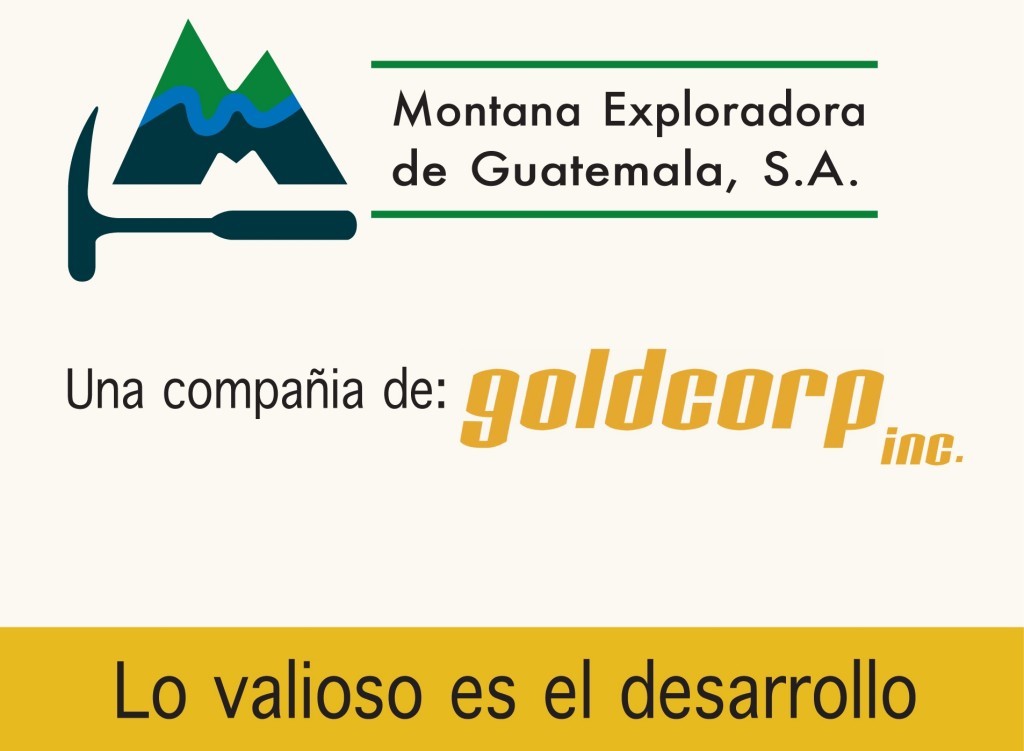Testimony collected in the village of San José Ixcaniche, 24 July 2009. Names have been deliberately omitted.
In 2003, I was a worker in the campo. One day we went to repair the road, the one which they are now surfacing with asphalt; and an engineer said to me, “I’ve got eight days of work for you; come with me.” Well, I certainly need work. …
At the same time as I started work there, a Costa Rican man arrived. He was looking for people who could read and write and who were very active. They chose me to go as his personal assistant.
What was the work that they gave me? It was the job of providing information to the local people. I didn’t know what it was that I was supposed to do, but they taught me about it and told me that I had to tell people what was going to happen here, namely that they were going to extract gold and silver. That’s when I first discovered that gold and silver were going to be extracted. Before that, they hadn’t talked about that at all.
I worked for two and a half years when suddenly they wanted me to tell them what the people outside were saying. … I realised that they were using me as a tool. … I wanted to say things about what we were suffering, but every time that there were meetings all they wanted to talk about was the development of the local area. …
We began to have contacts with many people about what the company was doing, although they gave me a payment so that I would keep quiet about the company with the people. … they suspected that I had contacts with many local people, so they controlled my work much more tightly.
In 2007, people tried to form a union … Out of respect for our people I could not be in this work. It was when they took advantage of me for respecting the people that they started obstructing me. It was then when they could take the opportunity of throwing me out of work. … They accused me of committing an offence, of coercion, of threatening behaviour … It took us a lot to get out of that, but they made a mess of my life, although it wasn’t just me. There were seven other people charged although those people were leaders of the group of five communities which had got themselves organised. …
The company tries to provoke the people. … We saw that the authorities give more consideration to those people who have money, and if the campesinos die, well they die. We saw that clearly.
For almost a year we were in this issue. The company tried to plead again, but the issue would be better reconciled with us so that it doesn’t continue as a problem. … If they could declare us guilty they would even be able to get us put in jail. If we say please forgive us, then that would mean we were guilty of all the damage. …
That’s my case. But there is another case. There is another group of women who were affected in Ajel, also for claiming their rights because of all the driving activity that was crossing their lands. They [the company] did what they liked and they installed whatever they liked on their lands. These eight women faced an arrest warrant. …
They sent two people here and what they wanted from me was a testimony in favour of the company. “We want you to talk with us here confidentially, not about individuals.” … despite all the bad things I had seen of the company, they wanted me to speak in favour of the company. But no way could I give testimony in favour of them because I knew what they had already done to me. But it’s the courage of all the communities that is with me now. But right now there is a serious problem in the community. There are divisions, there are pressures on the committees. Yesterday a certificate in favour of the company was promoted. The company insisted, obliged the people and the workers and even those who aren’t workers to sign the certificate.
Testimony taken by Martin Mowforth, Alice Klein, and Karis McLaughlin, 24 July 2009.



